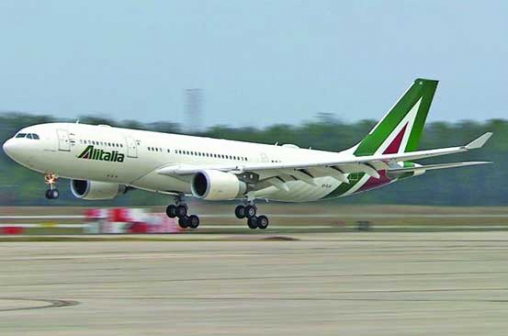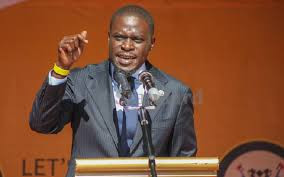
NAIROBI: In two days’ time, Pope Francis will touch down in Nairobi in one of the most anticipated visits by any high ranking official in the Catholic Church over the past 20 years as he kicks off his first Africa tour.
As preparations hit the penultimate stage with venues being decked out for his arrival, how exactly does the Pope travel and what does his entourage entail?
Well, despite the fact that he is not only a global religious leader but a Head of State too, Pope Francis has stayed away from the pomp and excesses of his peers.
But before he boards his plane in Rome for Nairobi, he will probably travel to the airport in a Mercedes Benz which he uses for travel over short distances in a tradition held by the Vatican since 1930.
The car bears the licence plate SCV1 (Vatican City 1) and, as expected, is fitted with tight safety features. For instance, the car is made of 8mm thick glass, it has an air-conditioning system just in case it gets too hot and spotlights are installed on the roof, floor and sides, providing sufficient lighting and making the Pope more visible in case of darkness.
The car’s glass windows are also bulletproof and bomb proof, thus it can withstand explosions and keep the Pope safe in adverse conditions.
Unlike many in similar positions, the Pope does not enjoy the comforts of a private jet or aeroplane.
As a tradition, the Vatican does not operate a special jet specifically earmarked for the Pope and other papal duties.
Instead, he travels aboard an Alitalia aircraft, one that forms the fleet of the country’s national airline, but excused from its normal route for any of the Pope’s foreign trips.

When the Pope takes over such an aeroplane, it takes the name AZ 4000 for protocol purposes. However, the media have coined the phrase Shepherd One to refer to the plane carrying the Pope. In Italy however, the plane is simply referred to as volo papale or “papal flight.”
The plane’s pilots and cabin crew are normally from the Alitalia. This does not have any special features as compared to say Air Force One, which apart from being some sort of bomb bunker has approximately 4,000 square feet of floor space on three levels, including an extensive suite for the President that features a large office, lavatory, and conference room.
Air Force One includes a medical suite that can function as an operating room, and a doctor is permanently on board. The plane’s two food preparation galleys can feed 100 people at a time.
The other passengers that board the plane are usually members of the Vatican Secretariat as well as accompanying journalists. When returning to Rome, the Pope can again use an Alitalia plane or use the national carrier of the country he has visited.
Stay informed. Subscribe to our newsletter
When he gets to Nairobi on Wednesday, he may choose to do away with the normal comfort of huge motor vehicle convoys accorded top state visitors and move around the capital less obtrusive and in simplicity as he did in his recent tour of the Americas where his choice of movement was a Fiat.
However, during his public outings and engagements, Pope Francis will definitely be ferried around in the Popemobile.
The Popemobile is the name given to the specially-equipped vehicles used to transport the Pope at various public appearances. The vehicles are designed to protect the Pope while allowing him to stay in touch with the crowds by remaining visible at all times.
The special fittings on the Popemobile include bullet-proof glass surrounding the Pope which was added after the 1981 attempt on Pope John Paul II’s life. It also has a handrail to enable the Pope to stand and wave to waiting crowds while the vehicle is in motion, and steps to allow ease of entry into and out of the vehicle.
The use of a Popemobile has not always been a tradition for the Vatican. The first Pope to use it was Pope John Paul II.
His predecessors, for centuries before him, however used a mobile version of the papal throne. This chair on poles was carried by twelve bearers and allowed the Pope to be seen by the people when traveling locally.
The occupants of the vehicle are normally the Pope, two papal aides, a driver and a security guard. When visiting another country, the hosts are expected to provide details of proposed transport and if they are not secure, in which case the Vatican will provide its own vehicle for the Pope to use during his visit.
 The Standard Group Plc is a
multi-media organization with investments in media platforms spanning newspaper
print operations, television, radio broadcasting, digital and online services. The
Standard Group is recognized as a leading multi-media house in Kenya with a key
influence in matters of national and international interest.
The Standard Group Plc is a
multi-media organization with investments in media platforms spanning newspaper
print operations, television, radio broadcasting, digital and online services. The
Standard Group is recognized as a leading multi-media house in Kenya with a key
influence in matters of national and international interest.
 The Standard Group Plc is a
multi-media organization with investments in media platforms spanning newspaper
print operations, television, radio broadcasting, digital and online services. The
Standard Group is recognized as a leading multi-media house in Kenya with a key
influence in matters of national and international interest.
The Standard Group Plc is a
multi-media organization with investments in media platforms spanning newspaper
print operations, television, radio broadcasting, digital and online services. The
Standard Group is recognized as a leading multi-media house in Kenya with a key
influence in matters of national and international interest.










